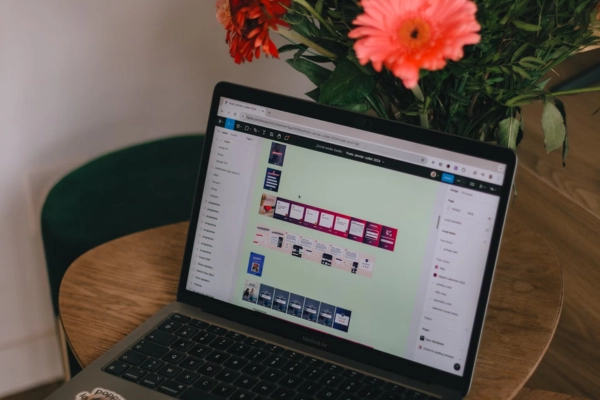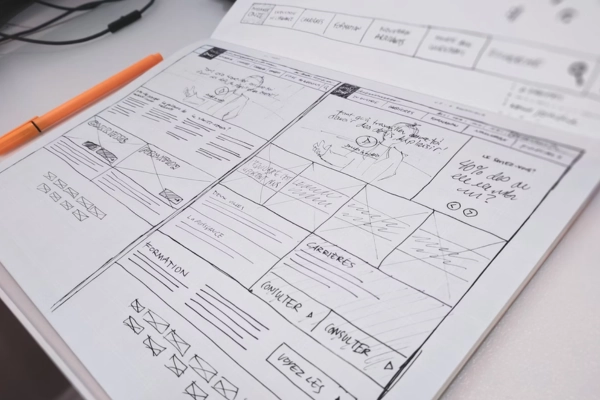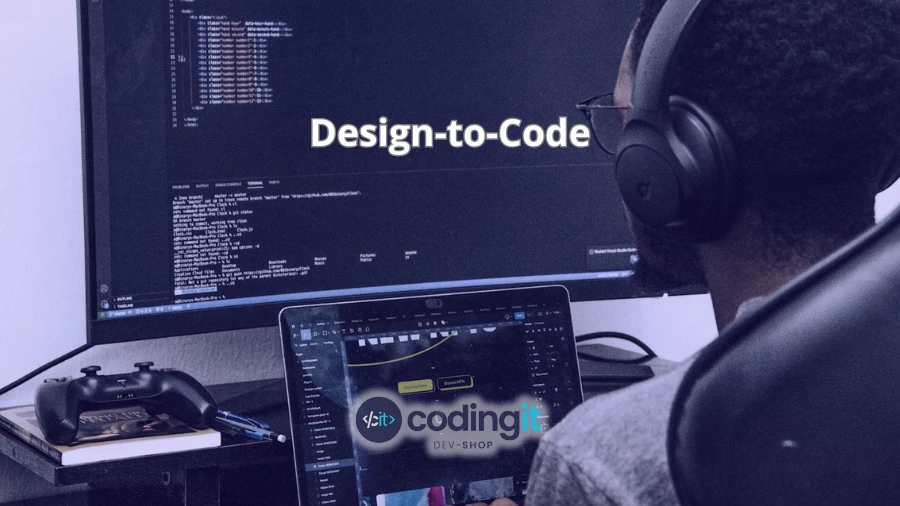A finished design isn’t a finished product. The trap is that it just looks like one. At some point in most projects, a file gets shared. Figma, Sketch, whatever. There it is: your future app, clean and clickable. Flows make sense. The branding’s on point. Maybe there’s even a prototype. And because it all looks good, the natural instinct is to move forward. “Now we just need to build it.”
But that sentence assumes more than it should. It assumes the animations are technically viable. That all the components are reusable. That edge cases have been considered. That responsiveness won’t break the layout. That everything that looks simple is simple. Spoiler: it usually isn’t.
Design tools are great at simulating intent, not complexity. They don’t warn you when something is going to add 30 development hours. They don’t highlight layout decisions that will collapse on smaller screens. And they certainly don’t validate whether that carousel, tucked into a modal, inside another modal, is going to play nicely with real data and user interaction.
The visual polish creates a dangerous illusion: that the hard part is over. That’s what’s left: “execution.” A phase where the design team steps back and the developers start typing. But if there’s no one validating feasibility early on, what usually happens is this: developers discover what doesn’t work halfway through the sprint. Things get rebuilt. Timelines shift. People get annoyed. Nobody remembers who approved what.
By then, you stop building a product and start correcting misalignment. And that’s what costs time. So no, a finished design isn’t a finish line. It’s an invitation to have the right conversations, before the wrong assumptions turn into technical debt.
Blog Summary:
This post breaks down where things can go wrong with design-to-code and how to stop wasting time on fixes that could’ve been avoided. We’ll cover:
- Why a “finished” design often hides unfinished thinking
- The assumptions that derail builds before they start
- The role no one talks about, but every team needs
- How silent design debt kills momentum
- Why linear processes don’t work in real-world software
- What changes when the bridge is built into the team from day one

Table of Contents:
When Execution Starts with Assumptions
When developers receive a design with zero context, the first thing they do is try to fill in the blanks. Mostly because they have to, not because they want to. There’s logic missing. Behavior that isn’t defined. Components that are styled but not scoped. So they guess.
Sometimes the guesses are right. Sometimes, they’re not. But unless there’s a clear system for catching those gaps early, things move forward anyway. Code gets written. Pull requests go out. And a week later, someone asks why the thing doesn’t work the way they imagined.
This is what happens when execution starts with assumptions instead of alignment. Everyone thinks they’re on the same page because they looked at the same screens. But “what it looks like” and “how it works” are not the same conversation.
You can’t fix this with documentation after the fact. Or with yet another handoff template. The issue isn’t tools, it’s timing. If design and development never overlap, the product gets built twice: once in theory, then again when reality kicks in. And the second version always takes longer.
The Missing Role No One Talks About
Most teams assume the bridge between design and code will just… happen. That devs will figure it out. Designers will clarify things if needed. That someone, somewhere, is making sure nothing falls through the cracks. That someone rarely exists naturally.
There’s a role in product teams that doesn’t necessarily have a title but makes a huge difference when it’s there: the person who sees both sides. Someone technical enough to understand implementation, but close enough to design to challenge decisions before they harden. Not to kill ideas, just to make sure they survive contact with reality.
When that role is missing, teams default to silos. Designers optimize for ideal experiences. Developers optimize for stability and speed. And the product ends up in the middle (in the best-case scenario), technically functional, but full of compromises no one really signed off on.
Bridging design and development isn’t about overcommunication either. It’s about early, technical feedback. Before things are too far along to change. Before rework turns into roadmap debt. It’s a responsibility. And someone has to own it.
When Design Looks Great, But Doesn’t Work
Some designs only exist on the surface. Visually sharp, full of intent. But structurally disconnected from how things get built. It happens when a screen depends on components that the system doesn’t support. Or when a layout assumes content will behave exactly like the placeholder. Or when a microinteraction adds days of complexity to something no user asked for in the first place.
While some will try to convince you of the opposite, these aren’t creative risks. They’re blind spots. Not because the design team failed, but because no one technical was there early enough to question feasibility.
The issue is isolation. Decisions were made in a vacuum, and now the product has to pay for them. Sometimes that means cutting features. Other times, it means rewriting large parts of the front-end just to make things work.

The Responsive Layout
It’s easy to make a design look great at 1440px. That’s where everything fits. Nothing breaks. The grid behaves. And the content always looks exactly the way it should. But products don’t live at 1440px.
They live on old iPhones, small laptops, landscape tablets, edge cases no one opens Figma to test. And things can fall apart there. Text overlaps. Elements collapse. Key interactions get buried three scrolls deep because no one planned for the real environment.
The inconvenient truth is that responsive design is hard. Especially if it’s often treated as an afterthought, like it usually happens. Designers work in perfect conditions. Developers inherit the mess when those conditions don’t hold. If no one’s thinking about responsiveness from day one, then every screen becomes a surprise. And surprise is a terrible way to build software.
Friction Between Teams
When design and development feel like separate teams, it’s usually because they were treated that way from the start. Design explores problems, proposes solutions, and iterates in Figma. Then, at some point, the file gets “handed off.” A meeting happens. Maybe there’s a walkthrough. Sometimes not even that. And then developers are expected to execute. As if building the product were just a matter of connecting the dots someone else already solved.
That’s not collaboration. That’s sequential output. And when you work like that, friction is just baked into the process. Developers push back on things that break the component library. Designers defend decisions made without full access to technical constraints. Product tries to keep the peace. Nobody’s being difficult. They’re just working with partial information, under pressure, on a timeline that assumes perfect alignment from day one.
And ironically, the more pressure there is to “move fast,” the less time gets spent making sure people are actually working toward the same outcome. Misalignment hides behind velocity until it starts costing time.
Most of the tension between design and dev has nothing to do with people. It has to do with timing. Feedback that’s too late feels like criticism. Feedback that comes early becomes part of the process. If teams don’t overlap, they don’t align.
Linear Processes Don’t Work for Software
There’s a reason software rarely ships exactly as planned: it’s not supposed to. Unlike manufacturing or print, software is fluid. Every design decision can impact functionality. Every technical limitation can reshape the experience. And every new insight mid-sprint can make a “final” spec suddenly obsolete.
Trying to force that into a linear process -design, then build, then ship- misses the point entirely. It assumes you can define everything up front. That discovery ends when implementation begins. But in real teams, that’s exactly when the most important questions show up.
- What happens when there’s no data?
- How does this behave when the API fails?
- Should this pattern scale across other modules?
None of that gets answered in a wireframe. Linear workflows delay those conversations until they’re expensive. And the later they happen, the more momentum gets wasted reworking things that looked “done.” You should know, the teams that move fast are the ones who keep planning while building.
What It Looks Like When the Bridge Is Built In
Most vendors wait for specs. They take what you give them and try to build it exactly as described. No questions, no pushback, no warnings, until the deadline slips and everyone’s wondering what went wrong. That’s not how we work.
At CodingIT, we join early. Discovery is where alignment happens, not after the sprint starts. We challenge design decisions when they still cost nothing to change. We map dependencies before they surprise anyone. And we don’t treat feasibility as something you validate after the prototype. It’s part of how we design from day one.
That’s the difference when you work with a team that’s built around the full product lifecycle. Not just the build phase. Not just the design. All of it. Looped, iterated, and constantly re-evaluated.
Our developers aren’t task-takers. Our analysts don’t just translate requirements. And our project managers don’t just track velocity. They build predictability through structure. Because in real software, progress isn’t how fast you ship. It’s how little you waste.
That’s what the bridge looks like when it’s part of the team from the start. If you want that for your business, you are just one click away.
